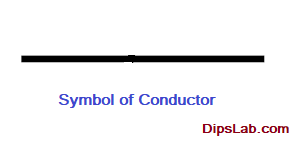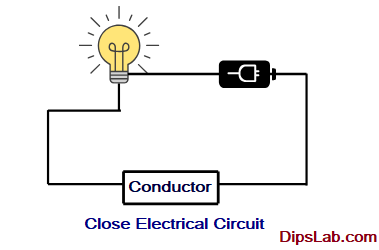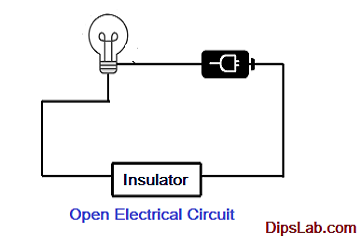Do you want to learn the difference between a conductor and an insulator?
I will explain this here.
You will find conductors and insulators connected in most of the electrical circuits and overhead electrical power systems. Both have a different working role, properties, uses, and functions.

Difference between Conductor and Insulator
Here is an explanation for each of the differences in tabular form.
| Sr. No. | Contents | Conductor | Insulator |
| 01 | Definition | A device or conducting material that can easily the flow electric current in a definite direction (free electrons) is called as a Conductor. | A device or material that can restrict the flow of electric current (free electrons) is called as a Insulator. |
| 02 | Formation | It is formed by metallic bonds. | It is formed by covalent bonds. |
| 03 | Conductive Property | It contains high electrical conductivity (so it carry more electrical power). | It contains low electrical conductivity. |
| 04 | Resistive Property | It has a low resistive property (low or negligible resistance). | It has a high resistive property. |
| 05 | Temperature Coefficient Property | It has a positive temperature coefficient of resistance. With the increase in resistance, the temperature also increases, and vice versa. | It has a negative temperature coefficient of resistance. The resistance increase with the decreasing temperature and vice versa. |
| 06 | Protective Function | The conductor does not work as a protector. | An insulator is worked as a protector or protective device. |
| 07 | Classification | There are four different overhead conductor is used.1. All Aluminium Conductor (AAC) 2. All Aluminium Alloy Conductor (AAAC) 3. Aluminium Conductor Steel Reinforced (ASCR) 4. Aluminium Conductor Alloy Reinforced (ACAR) |
There are six different types of the insulator are used.1. Pin Insulator 2.Suspension Insulator 3. Strain Insulator 4. Shackle Insulator 5. Post-Insulator 6. Stay Insulator |
| 08 | Materials Used (with Example) | Silver, Gold, Copper, Aluminium, Iron, Metal, etc. these are the types of conducting material used in the conductor. | Paper, Glass, Rubber, Mica, Porcelain, Wood, etc. these are the types of insulating material used in the insulator. |
| 09 | Protection | The live conductor protected by insulation wrapping like PVC (Polyvinyl Chloride). | There is no conducting material used in it so the insulator does not require protection. |
| 10 | Used | It is used to carry current in electric circuits. | It is used to limit the current to the desired path. |
11. Symbol of Conductor and Insulator
You can see these following symbols used in many of the electrical circuit designs.
- The basic symbol of the Conductor:

- The basic symbol of the Insulator:

12. Basic Working Concept
- Conductor in Electrical Circuit:
When the conductor connects to other electrical power devices in the electrical circuit, it forms a closed circuit.

Conductor connect with an Electrical Circuit
- Insulator in Electrical Circuit:
When the insulator connects to the other electrical power devices, the current will not flow in the circuit. This circuit works as an open circuit.

Conductor connect with an Electrical Circuit
Read More: Difference between the Closed and Open circuit.
These are the top 12 differences between the electrical conductor and the insulator. Hope each point is clear. Feel free to comment if you have any doubt.
Other related differences you would like to read:
- Electrical Vs Electronics Circuit
- Alternating Vs Direct Current
- Series Vs Parallel Circuit
- MCB Vs MCCB
- Electrical Vs Magnetic Circuit
- Single Phase Vs Three Phase
Thanks for Reading!
Helpful!
Thank you, Jyoti.
Nice one!
Thanks, Rohan.
Precise & Informative
Thank you, Sir.
Useful Information.
Thank you, Venkatesh.
Nice and helpful, it has really helped me in my studies.
Glad, you enjoyed 🙂
Thanks a lot .
I really appreciate it
Thanks, you too for sharing kind words.
Nice job well done
Thank you.